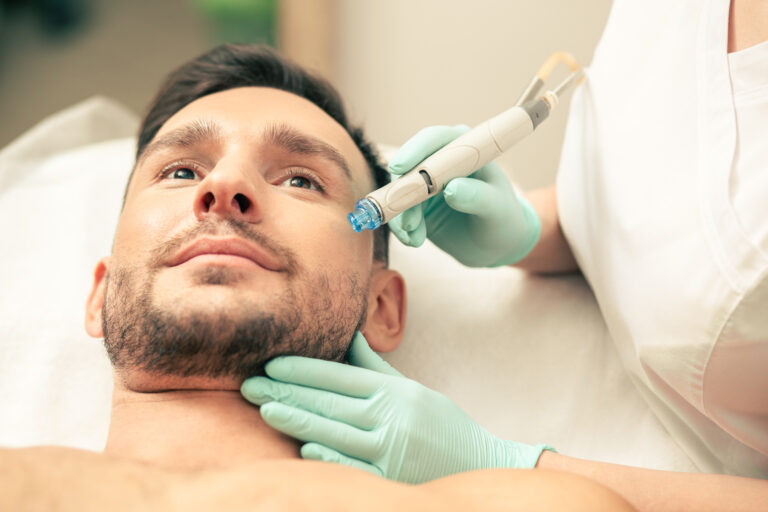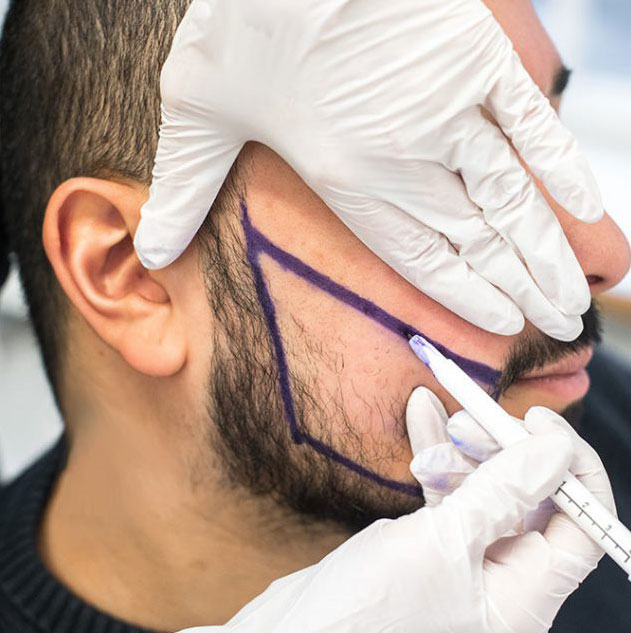What Is Beard Transplant?
A beard transplant is a surgical procedure designed to help individuals grow a fuller, thicker beard. It involves taking hair follicles from a donor area (usually the back or sides of the scalp) and transplanting them to the beard area. This process aims to enhance beard density and fill in any patches or thin spots.

How Does It Work?
A beard transplant involves several key steps to ensure successful results:
Consultation and Planning
During the initial consultation, your surgeon will assess your facial hair patterns and discuss your beard goals. They will create a personalized plan for the transplant procedure.
Harvesting Hair Follicles
Hair follicles are carefully extracted from a donor site, usually from the scalp. This can be done using methods like Follicular Unit Extraction (FUE) or Follicular Unit Transplantation (FUT).
Preparing the Donor Hair
The harvested hair follicles are prepared for transplantation. Each follicle is meticulously handled to ensure it remains viable for growth.
Transplantation
The prepared follicles are then implanted into the beard area. The surgeon places them in a way that mimics natural hair growth patterns, aiming for a realistic and natural look.
Consultation and Planning
During the initial consultation, your surgeon will assess your facial hair patterns and discuss your beard goals. They will create a personalized plan for the transplant procedure.
Harvesting Hair Follicles
Hair follicles are carefully extracted from a donor site, usually from the scalp. This can be done using methods like Follicular Unit Extraction (FUE) or Follicular Unit Transplantation (FUT).
Preparing the Donor Hair
The harvested hair follicles are prepared for transplantation. Each follicle is meticulously handled to ensure it remains viable for growth.
Transplantation
The prepared follicles are then implanted into the beard area. The surgeon places them in a way that mimics natural hair growth patterns, aiming for a realistic and natural look.

Experience During The Procedure And Post-Procedure
During the procedure, you will be under local anesthesia to ensure you are comfortable and pain-free. The process is typically done on an outpatient basis, so you can go home the same day. The actual transplant usually takes several hours, depending on the extent of the procedure.
After the transplant, some redness and minor swelling in the beard area are common. You might also experience some scabbing as the transplanted hair follicles settle in. Most people resume their normal activities within a few days, but it’s essential to follow your surgeon’s aftercare instructions for optimal results.
Benefits
The Beard Transplant procedure involves several key steps to ensure a successful outcome:
Natural-Looking Results
A well-executed beard transplant creates a natural-looking beard by mimicking the natural growth patterns of facial hair.
Permanent Solution
Once the transplanted follicles establish themselves, they typically grow indefinitely, providing a long-term solution to beard thinning or patchiness.
Enhanced Beard Density
The transplant can significantly increase beard density, filling in sparse areas and creating a fuller, more robust beard.
Customizable Results
he procedure is highly customizable, allowing you to achieve your desired beard style, length, and density.
Natural-Looking Results
A well-executed beard transplant creates a natural-looking beard by mimicking the natural growth patterns of facial hair.
Permanent Solution
Once the transplanted follicles establish themselves, they typically grow indefinitely, providing a long-term solution to beard thinning or patchiness.
Enhanced Beard Density
The transplant can significantly increase beard density, filling in sparse areas and creating a fuller, more robust beard.
Customizable Results
he procedure is highly customizable, allowing you to achieve your desired beard style, length, and density.


